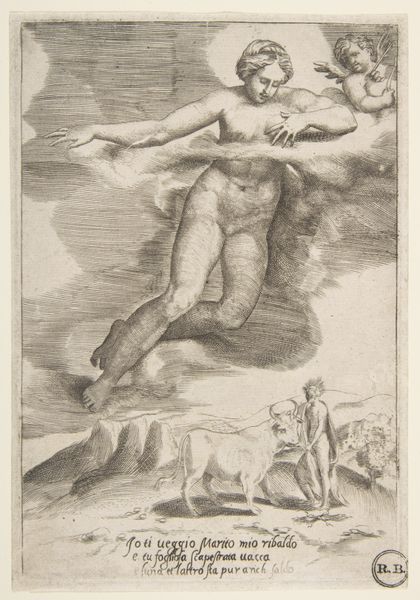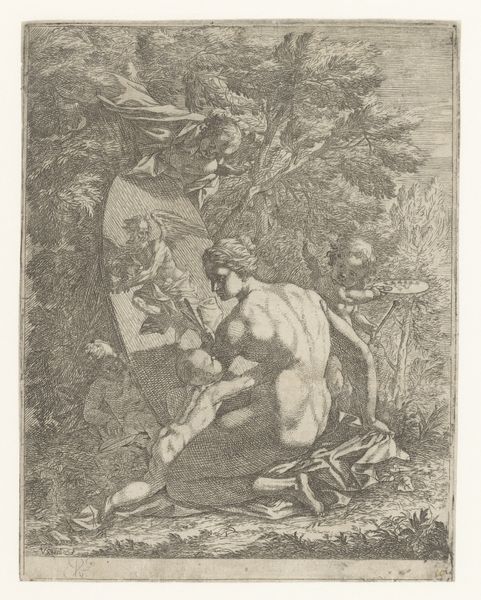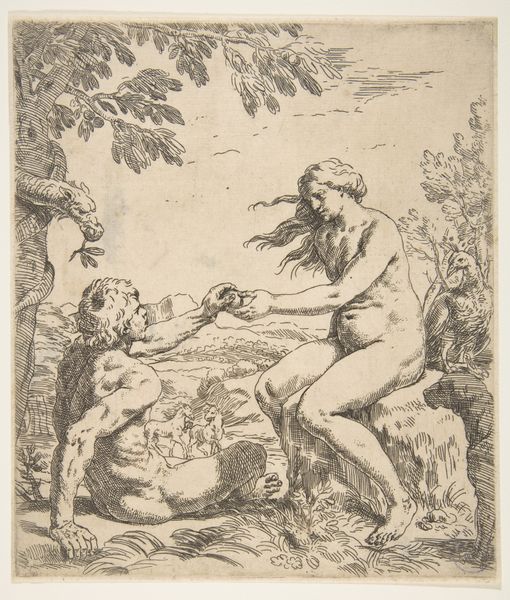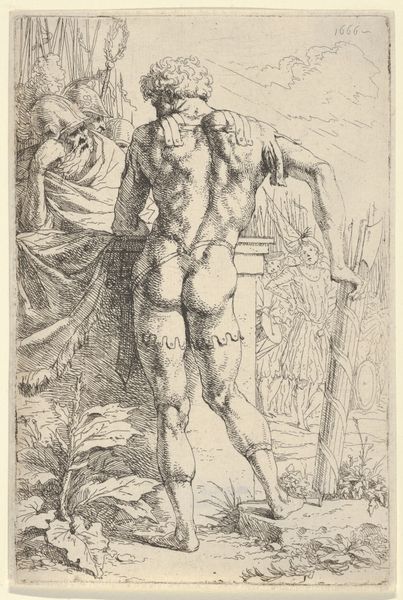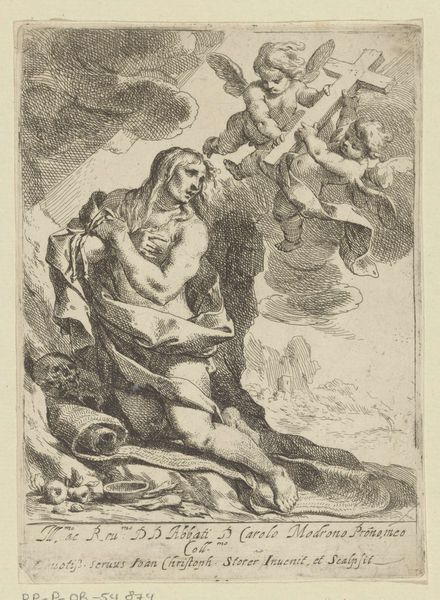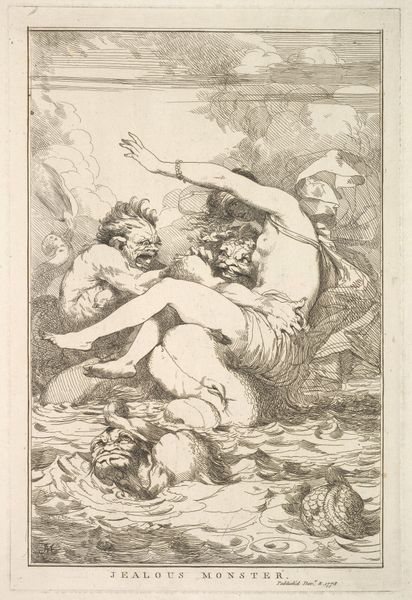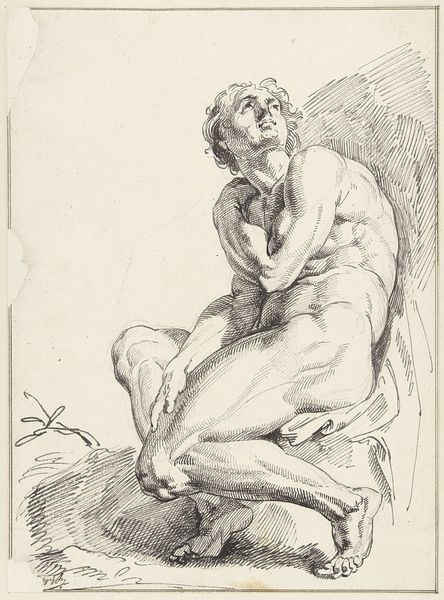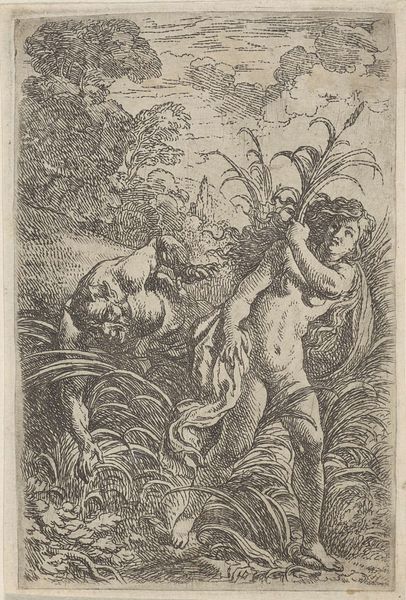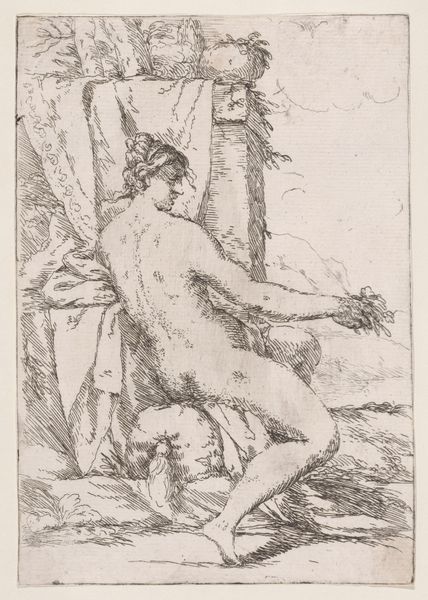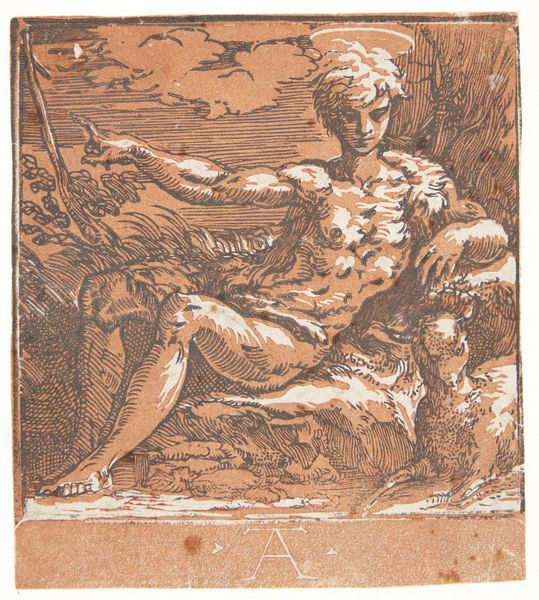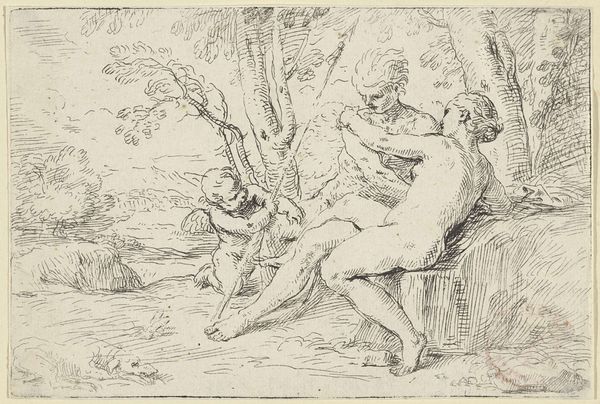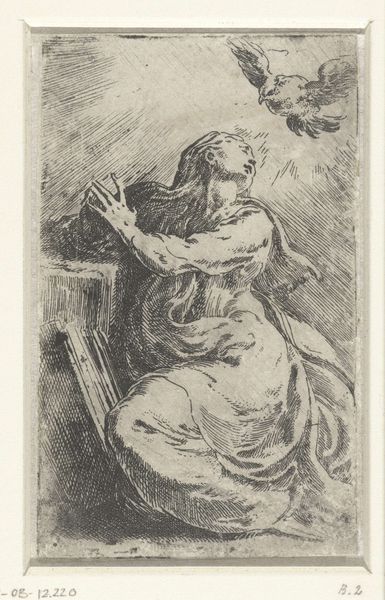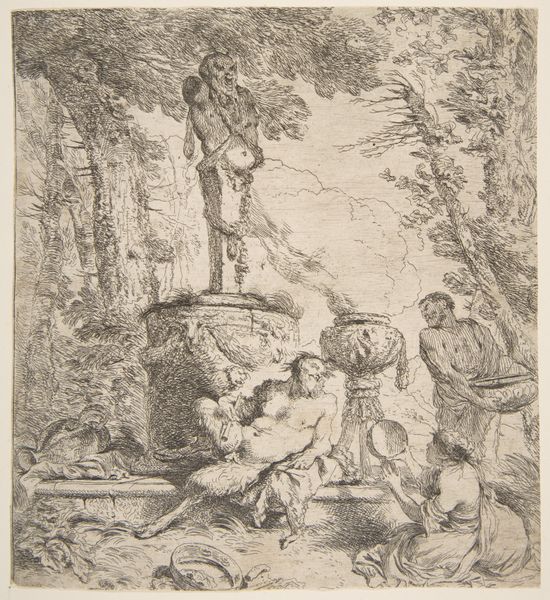
Saint Sebastian pierced with arrows and tied to a tree, copy after Cantarini 1634 - 1700
0:00
0:00
drawing, print, ink, engraving
#
tree
#
drawing
#
ink drawing
#
allegory
#
baroque
# print
#
pen sketch
#
figuration
#
form
#
ink
#
pencil drawing
#
history-painting
#
nude
#
engraving
Dimensions: Sheet (Trimmed): 7 1/2 × 4 15/16 in. (19.1 × 12.6 cm)
Copyright: Public Domain
Editor: Here we have "Saint Sebastian pierced with arrows and tied to a tree, copy after Cantarini," created sometime between 1634 and 1700. It's an ink drawing, and what strikes me is the vulnerability conveyed through such precise lines. What do you see in this print? Curator: Immediately, I'm drawn to consider the process of producing multiple copies of an image during this period. The materiality of the engraving process—the labor, the tools, the conscious effort to translate an image for broader consumption—all speak volumes about the culture’s desire for this specific subject. Who was commissioning and buying prints like this, and why? Editor: That's interesting! I hadn’t thought about the printmaking process itself. Was this a common subject at the time, and how did that impact its production? Curator: Saint Sebastian's martyrdom was indeed a popular theme. This popularity intersects with the rise of print culture, facilitating the dissemination of religious and allegorical narratives. How does the medium shape our perception of the suffering depicted? Is it elevated to art, or does it bring it to the level of accessible, reproducible commodity? Editor: So the value isn't just in the image, but also in its accessibility as an object. It makes me consider the economics and demand behind these kinds of pieces. Curator: Precisely! Thinking about the artist’s labour and the eventual circulation helps us deconstruct established notions of artistic creation and authorship. It highlights the networks involved. Does this change how you understand the work? Editor: Absolutely. Thinking about the broader material and cultural context gives so much depth. I see it not just as a religious image, but as an artifact embedded in a network of production and consumption. Curator: Exactly. And, considering its creation as a copy, it shifts the focus from "original" genius to the circulation and adaptation of images. It's quite telling!
Comments
No comments
Be the first to comment and join the conversation on the ultimate creative platform.
